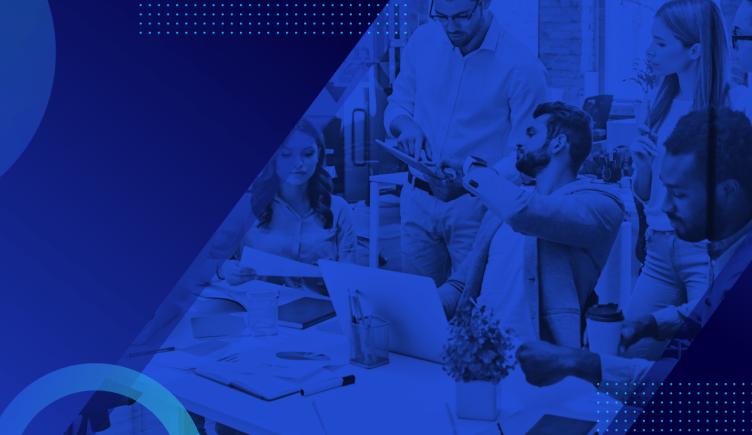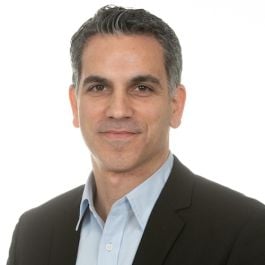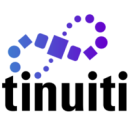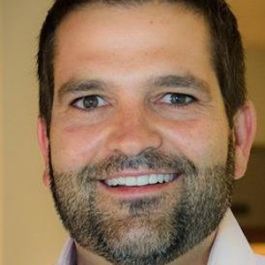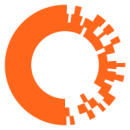Hot on the heels of 2020, the year that would never end, 2021 has all but disappeared in a flash. Having well and truly adjusted to remote work, this has been the year where the tech industry regained its footing and set about harnessing the trends and evolutions unleashed or accelerated by the pandemic.
As enterprises across the economy complete the great cloud migration and advances in data science unearth new ways to leverage exploding troves of information — coupled with regulatory changes around privacy and user data — the pace of change shows no sign of slowing soon.
How does a tech leader stay on top of it all? How does one separate the buzzword-driven fads from the enduring structural changes that will radically alter how your industry does business?
With 2022 already looming on everyone’s business plans, we checked in with engineering, IT and data science leaders at some of the most relevant companies in software today, spanning everything from digitally native consumer apps to SaaS providers to century-old household names that have skillfully adapted to the digital age. Many shared how their experiences over the last 18 months have taught them the importance of organizational agility and empathetic leadership. And everyone had plenty to say about the technology trends shaping their various industries, and how they’re harnessing those changes to set themselves up for success in the years to come.
Company background: Citi’s ICG global network of Innovation Labs employs more than 250 technologists around the world, who conduct research and development for the next generation of solutions on behalf of one of the world’s largest financial service providers. The work involves rapid research, experimentation and prototyping, and the team occasionally incorporates new technology into Citi’s stack through startup partnerships.
What they’re working on: As part of its R&D mission, Innovation Labs has been boosting efficiency in its processes of assessment and onboarding for startups, thereby speeding up its ability to put cutting-edge technology into production across Citi’s enormous range of products and user interfaces.
What is the most impactful project your tech teams have worked on so far this year?
Citi’s ICG Innovation Labs have always been at the forefront of experimenting with new technologies. However, one of the biggest challenges our business partners experienced was the inefficient processes for evaluating startups and vendor solutions. Our current environment requires innovation to be delivered at a faster pace, so reducing cycles of technology assessment is crucial for the growth of our business and industry. Following an extensive research process, we built an end-to-end onboarding process for startups, which accelerates the evaluation of solutions through digital sandboxing environments and advanced data generation solutions to resolve data sensitivity challenges. These new processes and tools allow our businesses to explore new technologies in a fraction of the time and conduct more scalable assessments with multiple vendors to find the best solution more efficiently.
“The last decade saw a dramatic rise in the volume of data and computational capabilities, which drove massive AI advancements that accelerated the emergence of cognitive systems that can simulate human behavior.”
What are the most disruptive technology trends shaping your industry heading into 2022?
Artificial intelligence will continue to be one of the most disruptive technologies in the banking industry in 2022. The last decade saw a dramatic rise in the volume of data and computational capabilities, which drove massive AI advancements that accelerated the emergence of cognitive systems that can simulate human behavior. Use cases exist across various sectors such as product recommendation, fraud and cybersecurity, and customer service using chatbots and natural language processing. However, they are not yet at full scale.
Next year, we expect to see solutions scale even further and machine learning to be introduced in a broader range of use cases, including hyperpersonalization of digital experiences, increased process efficiency and automation, improved customer relationships, sophisticated cybersecurity solutions and more. The growth of AI will also introduce greater investment in technologies that will enable more robust operations such as machine learning ops tools, model explainability, AI ethics and more. Those technologies not only accelerate adoption but also help banks reduce risks and address regulatory needs.
Company background: Medallia’s customer experience software powers companies across finance, hospitality, B2B and retail. The Silicon Valley company went public in 2019 and acquired real-time speech-to-text platform Voci Technologies for almost $60 million last year.
What they’re working on: Among other projects, Khanna’s teams introduced an AI-powered real-time digital experience score this year, which helps customers detect a user’s frustration or difficulty finding information. The idea is to allow immediate action — for example, prompting the opportunity to chat with an agent to resolve an issue.
What’s the biggest challenge awaiting your tech teams in 2022?
Growing rapidly and investing in R&D, we face a constant need to find, recruit and retain a skilled workforce. To meet this challenge, there are a few things that can be done. First, on my team we are continuously adapting our processes to allow us to hire anywhere faster, onboard faster and build the teams we need. If there is one silver lining to the pandemic, it has shown us all the benefits of reducing geographical boundaries on hiring. We now have project managers and engineers across the globe working as completely remote employees. They will remain remote regardless of when, if or how most workers return to office settings.
I also believe that successful organizations will recognize that they cannot do everything in-house. Our teams are looking for the right opportunities to leverage open source, activate strategic partnerships or even make acquisitions to deliver for our clients. In 2022, the rapid transformation of business — both in terms of technology and the culture and people side — will continue to fuel our need to recruit, innovate, partner and integrate to deliver for our customers.
“Not every software company has speed built into their DNA, but develop your solution and take it to the customer. Long cycles will cost you business.”
Looking forward to 2022, what advice would you give to fellow technology leaders in your industry?
Fail fast. Customers are looking for innovation and collaboration. Their businesses are changing more rapidly than ever before and they need to develop and adapt their technology more quickly. Not every software company has speed built into their DNA, but develop your solution and take it to the customer. Long cycles will cost you business. Customers also expect to be part of a continuous feedback loop, and they expect that feedback to be integrated into your technology. Don't fall into the trap of building everything from scratch. Get help through open source, partnerships and acquisitions, which are all effective ways to build and scale offerings.
Finally, have empathy. When the biggest challenge we face is acquiring talent, nothing is more important than empathy. It’s especially hard out there for everyone. From fears around Covid-19 to childcare to the stresses of isolation, employees have more on their plates than ever before. And as we have seen, they have options when it comes to where they chose to employ their talents. A “fail-fast” culture should never become a culture without empathy and caring.
Company background: Duolingo’s gamified approach to language helps more than 300 million users acquire and practice new languages. The company’s enormous data trove has powered everything from research into optimizing reminder notifications to theories on how to help improve outcomes for learners of indigenous languages.
What they’re working on: Over the last year, Duolingo has worked on personalized instruction programs that adapt a lesson to a level of difficulty exactly suited to a student’s proficiency, a reboot of its Android app and a so-called “Big Red Button” project to help manage and communicate with users during an unplanned service outage.
What’s the biggest challenge awaiting your tech teams in 2022?
Glance: For the Duolingo app, our biggest challenge awaiting our tech teams in 2022 and beyond is teaching to higher levels of proficiency. Internally, we use the Common European Framework of Reference for Languages levels as our framework to measure a learner’s proficiency. Someone who is at the B2 level in English is what is commonly seen as “fluent” and allows them to work as a software engineer at a company like Duolingo or Google. Our goal is to get Duolingo users consistently to the B2 level.
We have identified two key technologies that will allow us to get there: personalization and speech feedback. For personalization, we’re working on a second-generation knowledge model internally called Birdbrain 2.0. This new model will incorporate NLP to make even better predictions about what students know. The second key technology we’re working on is speech recognition and speech feedback. We have hired speech experts from Apple’s Siri, Carnegie Mellon University and Stanford, who work to give the most accurate and actionable speech feedback to our learners. For this, we are building an in-house suite of machine learning systems and tools.
“Investing in early career diversity, employee retention and career development means that, three-to-five years later, our engineering leadership is much more diverse than the tech industry at large, seeding a virtuous cycle of attracting strong diverse hires.”
Looking forward to 2022, what advice would you give to fellow technology leaders in your industry?
Hacker: Competition for top industry talent continues to heat up, especially in the new environment where many companies offer remote positions. What’s worked for us is to hire some key senior people in new roles and then build in-house training programs to develop early career software engineers in these disciplines. We’ve done this for iOS, Android, web and back end, and 90 percent of our staff were trained in-house. We plan to adopt this same strategy for building out an SRE team.
Improving the diversity of engineering teams requires concerted effort and attention but is very doable, especially for companies that start this early. The top talent is out there for companies willing to invest in outreach. Duolingo has done this first by targeting top computer science programs with diverse student populations. We also found that active and diversity-focused computing clubs are strong indicators of a university’s commitment to diversity and inclusion at a larger scale, so we also prioritize schools that have active student organizations. We also recruit at conferences like GHC and Tapia, partner with Rewriting the Code and host numerous online networking events. Investing in early career diversity, employee retention and career development means that, three-to-five years later, our engineering leadership is much more diverse than the tech industry at large, seeding a virtuous cycle of attracting strong diverse hires.
Company background: Tinuiti is the largest independent performance marketing firm across Streaming TV and the trio of Google, Facebook and Amazon, with nearly $3 billion in digital media under management. Through a performance planning framework known as GAMMA and a proprietary suite of marketing intelligence and media activation technology called Mobius, the company helps customers with search, social, mobile apps, CRM, email marketing and plenty more.
What they’re working on: Over the next two years, Sarkar said his engineering teams will be building the next generation of Mobius. Tinuiti’s engineers have already rolled out ML-based bid predictions and are currently developing a set of marketing science apps designed to go beyond static insights to enable predictions and “what-if” analysis.
What’s the biggest challenge awaiting your tech teams in 2022?
We are on the cusp of a massive industry shift in how we market to our customers while respecting their privacy. It will require our engineering teams to build a privacy-safe and compliant environment to securely ingest and store consumer-level data, build appropriate workflows to handle the General Data Protection Regulation, California Consumer Privacy Act compliance and so on, as well as allow for the building of data products to drive insights based on this data.
Another one of our biggest challenges is around doing AI at scale, coalescing our marketing science practice with our product engineering teams. We are currently working on introducing an MLOps function that will allow us to roll out some of the most impactful marketing science and AI/ML applications in production that can help our customers achieve exceptional value. This can be a challenge and require teams to not only work together but to find new and better ways to build solutions at scale across multiple disciplines. We see more and more demand for advanced marketing science apps from our customers.
“Do not hire for specific skill sets, but hire smart technologists and engineers who can learn new skills. Do not hire for open roles only, but hire great people when you find them. They will help you find the perfect role for them.”
Looking forward to 2022, what advice would you give to fellow technology leaders in your industry?
My first piece of advice is to go serverless. Infrastructure management and operations should be avoided as much as possible. You should make use of cloud-native architecture-based technologies like Snowflake, Firebolt and BigQuery, which allow for granular management of computing cost separately from storage. The sky’s the limit when it comes to scalability on the cloud — but so is the cost. Build architecture that is simple, modular and pluggable, but make sure to focus on user experience because complex architecture leads to high compute and development effort and cost. Think automation first while building an architecture. Consider how AI and ML can help automate and enhance user experience and build the architecture that will allow for AI at scale. Finally, data privacy and security cannot be an afterthought. It has to be one of the top — if not the top — aspects of the design. Focus on privacy by design.
All the above are nothing new. They are characteristics of modern data architecture. The need for faster decisions based on data and analytics has blurred the difference between analytical applications and transactional applications. They are more relevant than ever before in building data analytics platforms that will support digital marketers’ needs.
Do not hire for specific skill sets, but hire smart technologists and engineers who can learn new skills. Do not hire for open roles only, but hire great people when you find them. They will help you find the perfect role for them. And most importantly, get comfortable with change. As much as we all like to think we are designing for the future, change is inevitable. Focus more on forming teams that are agile, nimble and self-organizing and that can adapt when needed.

Company background: Signify Health connects patients with in-home health services in the belief that home-based care helps prevent costly adverse effects and facilitates a more holistic approach to treatment. To that end, the company leverages advanced analytics, technology and nationwide provider networks to build value-based payment programs.
What they’re working on: Signify Health is harnessing what it sees as a nationwide trend toward value-based care because, as Builder put it, “It means aligning what we pay for care with the delivery of care that leads to the best possible health outcome.” Builder previously led tech and product teams at both Rent the Runway and Soulcycle.
What is the most impactful project your tech teams have worked on so far this year?
When Covid-19 first hit, we knew that we were going to quickly need to figure out how we could continue to conduct the in-home health evaluations that we provide for more than one million people each year. In a matter of weeks, we undertook a massive infrastructure project, enabling our national network of mobile clinicians to keep supporting people in their homes, even when we couldn’t be sitting next to them in their living rooms. Our engineers supported this project by leveraging our home and community services platform, which works very similarly to Uber but instead of routing books, electronics or food, we route credentialed providers to people’s homes. This platform accounts for and matches each person’s needs, clinician expertise, zip codes, availability and other factors such as state and local Covid-19 protocols. Our engineers helped us pivot to a mix of in-person and virtual visits, and to make real-time adjustments in what continues to be a very fluid situation in some areas.
“My advice is to be a little bit flexible with the methodologies that you’ve held as the Holy Grail for the way software is developed. I don’t necessarily have the answer, but I do know that what has been working for the past decade will need to change.”
Looking forward to 2022, what advice would you give to fellow technology leaders in your industry?
The way we work has changed dramatically over the last year-and-a-half, and so I believe that the methodologies and means that we’ve traditionally used to develop software need to change again — there needs to be a third turning of the screw. The first turning of the screw was a move away from waterfall development to agile, followed by agile becoming widely adopted on an enterprise scale. But the third turning of the screw that still needs to happen is the way we develop and check software at scale. When we were mostly in-person and working together, we would have sprints, get together and work, check the code set and so on, but we’re now working remote or hybrid. So my advice is to be a little bit flexible with the methodologies that you’ve held as the Holy Grail for the way software is developed. I don’t necessarily have the answer, but I do know that what has been working for the past decade will need to change.
Company background: Founded as Match.com in the early 1990s, Match Group is now one of the world’s biggest online dating companies. Headquartered in Dallas, the organization owns and operates Tinder, OkCupid and Hinge, among others. Earlier this year, the company announced its acquisition of Hyperconnect, a Korean social discovery startup.
What they’re working on: Match Group’s engineering teams are growing, and Rothrock’s team has invested in tools that enable and enhance a hybrid and remote-first work environment, building a culture that he says encourages junior engineers to build a career at the company.
What is the most impactful project your tech teams have worked on so far this year?
By far our most impactful project was expanding our video-based features. Since people weren’t dating in real life, we needed a way to keep enabling meaningful connections, and video was it.
We were already trending in this direction, but Covid-19 made it absolutely essential and definitely sped up the timeline. Our engineering teams worked around the clock to seamlessly integrate audiovisual features into our existing apps. Tinder, Match, Meetic, Pairs and Plenty Of Fish all rolled out some version of one-to-one video within the customer experience, and it was a success. Our user base was thrilled to be able to get the experience they knew and loved, just better.
“I’d look out for our new livestreaming products and features that create new ways for groups of people to interact.”
What are the most disruptive technology trends shaping your industry heading into 2022?
I’d say that audiovisual innovations will trend into next year and beyond. Of course, video has enabled remote working during Covid-19, but the potential to do more is very promising. It’s actually a pretty young field, and we expect people to use it more and in new ways.
For example, I’d look out for our new livestreaming products and features that create new ways for groups of people to interact. We were excited to launch Plenty of Fish Live this year and we’re looking forward to bringing Hyperconnect’s one-to-many technology to our other apps.
Company background: Stitch Fix is a personal styling service for men, women and kids, housed entirely online and powered by personal preferences and budget limits. Stylists then hand-pick items based on a user’s tastes and needs.
What they’re working on: Stitch Fix is doubling down on its prediction capabilities to build what Brown calls “highly predictive, real-time reactive systems to take in all of the incredibly rich feedback our clients share with us to then bring them the best selections.”
What is the most impactful project your tech teams have worked on so far this year?
This year, we hit a major milestone in the evolution of our service by enabling everyone to shop personalized recommendations in their own personalized store, called Stitch Fix Freestyle. Our teams leveraged the billions of data points our millions of clients have shared with us over the past decade to build algorithms that instantly personalize items and outfits for anyone, including clients who’ve never shopped with Stitch Fix before.
With Freestyle, clients who have never used Stitch Fix will answer a few short questions and be instantly transported to their personal online shop where they can browse a shoppable outfit feed or buy specific items curated just for them from a variety of categories and departments, brands and seasonal trending shops. Styles refresh frequently throughout the day so there’s always something new to try. Building the algorithms and systems that power the real-time, personalized experience of Freestyle was a massive effort by our tech teams, and there’s so much more ahead as we continue to build new experiences and offerings.
“Advancements in AR and VR in fashion and ‘try-on’ is a huge disruptor in this space, and it’s not just for consumers — it’s also changing the way that we design apparel.”
What are the most disruptive technology trends shaping your industry heading into 2022?
As we move into a new era where “normal” looks more like constant change, figuring out how to bring what shoppers love about in-person retail into the comfort of their own homes is top of mind for our industry. Advancements in AR and VR in fashion and “try-on” is a huge disruptor in this space, and it’s not just for consumers — it’s also changing the way that we design apparel. We’re using these technologies to be even more precise in reflecting how products fit on our customers and what sizes will feel the most comfortable to their bodies.
A less visible disruptor in retail is predictive algorithms on the B2B side. More and more, automation is unlocking productivity internally and having an outsized impact. While we developed our predictive algorithms to serve our clients, we’re now also applying this technology to inform our product purchases and partnerships, building efficient, agile supply chains that enable us to bring the best selection and experience to our clients. This has been especially prescient in a year with very little predictability, constant shifts in customer bases and changing demand. At Stitch Fix, we had a head start on building these agile supply chains, but there’s so much more ahead in this space to make it even better.
Company background: Panasonic’s Automotive unit leverages technology like IoT, big data and renewable energy to deliver safety, entertainment and connectivity features to partners across the carmaking industry. The company also works with in-car audio systems, electronic components like seat heaters and lighting, and the cameras, sensors and mirrors that power autonomous driving experiences.
What they’re working on: The automotive industry is in the midst of multiple revolutions, including a transition to electric motors, the rise of autonomous vehicles, a slowdown in shared mobility and an unprecedented strain on the global supply chain. “This greatly helps the Panasonic Automotive business plan as more technology finds its way into consumer vehicles,” Poliak said, “specifically tech that we have focused on: high-end information technologies in vehicles, multiple video screens, cameras and battery technology.”
What is the most impactful project your tech teams have worked on so far this year?
We are creating a platform that brings together industry and ecosystem partners, customers and even our own silos of innovation on our SkipGen 2 platform, which leverages the latest state-of-the-art Qualcomm processor. With it, we have the power to create a mixed criticality environment that ties with our vision and sensing solutions, as well as innovative display technologies including head-up displays, software platforms and augmented reality. All of this tech is tied into our core hardware and software platform that enables the entire automotive ecosystem to rapidly prototype and build innovative solutions in a fraction of the time it would typically take. Players like Google, Amazon, Cerence, Tomtom and Xperi among others have used our platform to speed up time-to-market of new tech in automotive, working together with Panasonic.
We are working on many technologies that will alter and enhance the automotive experience in the future. Some require a lot of work, patience and investment. Numerous OEM customers are challenging our thinking and our business model while at the same time wanting to collaborate more closely, develop concepts together, share IP and innovate as an internal business unit. My colleagues and I have fought to be in this position for many years, to change the paradigm of being a vendor. With some very accomplished partners, it’s extremely important to define roles and responsibilities while maintaining a very strong relationship with all parties. This culture also extends to engineering. Whether production or advanced engineering, we work hard to push the envelope of what is possible today to ensure we can deliver a high-quality, stable, reliable and state-of-the-art experience. I am really proud of what our engineering team has been able to accomplish during this unprecedented time, especially while we have all been required to work from home. We learned how to be successful in that environment by listening and sharing regularly.
“Some of these trends oppose one another, like the desire to have a state-of-the-art in-vehicle experience with limited investment. That is not easy.”
What are the most disruptive technology trends shaping your industry heading into 2022?
There are many trends that influence being a Tier 1 Automotive Supplier. We have enormous momentum in the electric vehicle battery market. The traditional infotainment space is changing, and certain automakers are building software teams to build and maintain systems, while a global trend toward fewer computing nodes in the vehicle with mixed criticality (functionally safe systems on the same platform as normal systems) increases in momentum. Some of these trends oppose one another, like the desire to have a state-of-the-art in-vehicle experience with limited investment. That is not easy.
To adapt, we continue to refine, invest in and optimize our global manufacturing footprint to be world-leading for efficiency and competitive in build-to-print engagements in which our customers may do much of the software. Additionally, we are building flexible platforms that can enable larger reuse across customers and even other industries. This ensures that we provide better total-integrated solutions that can be leveraged by many customers while also remaining more competitive than in-house development.

Company background: Apptio builds products that help CIOs and CFOs manage IT spending. The software is designed to help leaders make technology investments that drive better outcomes and maximize efficiency, and boasts customers across the banking, government, retail and insurance sectors, to name a few.
What they’re working on: Apptio has assembled a data architecture that Ung said allows his team to query across hundreds of terabytes of disparate data sets within seconds, providing near real-time insights for its customers. The company is also invested in machine learning via Amazon’s SageMaker to train models that can automatically categorize and classify data to help users pull insights from it.
What is the most impactful project your tech teams have worked on so far this year?
Continuous improvement of our services to scale and improve performance is key to our company’s growth. We double the amount of data and the number of customers we handle every year and need to scale our systems to meet this growth. We have, therefore, made a significant investment in the cloud, leveraging managed services that help us scale quickly without having to worry about the underlying infrastructure. Using more managed services gives our engineers the building blocks necessary to build scalable services for our customers.
This year, we have been containerizing our workloads and leveraging Kubernetes to help abstract away the underlying compute infrastructure and allow our teams to build robust services that can be updated, tested and deployed in a highly automated and standardized manner. This has helped improve our development velocity across various teams and eliminated some of the work required to maintain these services. This means our developers get out of the mundane manual work and get to focus more time on building key features and products that bring value to our customers. We’ve also made investments in how we handle data, and moved from homegrown solutions to leveraging technologies like BigQuery and Snowflake to more efficiently manage and query massive amounts of data. This has allowed our teams to free up engineering cycles and invest more time in business-critical, customer-facing feature development.
“Make sure you’re building products that you believe in, not just that the business says it needs. I believe Apptio’s products are critical to any organization that needs to move rapidly.”
Looking forward to 2022, what advice would you give to fellow technology leaders in your industry?
Look for ways to validate your technology investments, and continue to leverage cloud-managed services in a fiscally responsible way to self-fund investments in, say, machine learning. By optimizing costs and reducing cloud spend, companies can free up budget to invest in exciting areas for engineers that are also impactful for customers.
Make sure you’re building products that you believe in, not just that the business says it needs. I believe Apptio’s products are critical to any organization that needs to move rapidly. In terms of agile, we have a suite of products that help manage work and OKRs by providing observability into how people are doing work and tracking toward goals. Apptio also provides transparency into on-premises, cloud and SaaS costs to help organizations move with speed and ability, so that engineers can deploy new services without running afoul of their finance teams.
Company background: One Medical seeks to lower boundaries for primary care, with in-person and telehealth services provided in return for a flat yearly membership fee. The company went public last year after raising more than $500 million in funding, and its services are offered as a benefit to employees at organizations like Airbnb, Google and Nasdaq.
What they’re working on: One Medical acquired senior and Medicare primary healthcare company Iora Health in June, and Parmenter’s teams are working on integrating the combined organizations. The team is tasked with identifying the best elements of both models and applying them to all patients.
What are the most disruptive technology trends shaping your industry heading into 2022?
The pandemic has created an interesting inflection point for healthcare and technology. We’ve seen many organizations roll out telehealth more broadly and a huge increase in people wanting to figure out how to improve healthcare through technology. The reality is that healthcare technology is not being disrupted fast or deeply enough (many health institutions still use fax, for example), but the focus now should not be to develop tech for tech’s sake. The focus should be on how we can improve the healthcare experience and quality of care at all levels using technology as part of that solution.
Video visits and telehealth are something we’ve been doing at One Medical for many years, and our continued focus is using a hybrid approach of in-person and digital care at scale to deliver better care and better results. Regardless of the mode of care, people still have worries and needs and still have things that matter to them. We want to make sure that we’re there in whatever form that takes, improving the continuity of care throughout the process.
“Focus on leading with empathy to keep your teams happy, productive and engaged. This past year, everyone has experienced a great deal of change. It’s important to remember that the people on our teams are, in fact, human, and humans thrive when they feel well cared for and appreciated.”
Looking forward to 2022, what advice would you give to fellow technology leaders in your industry?
Looking forward, my advice is critical, given the challenges of this past year: Focus on leading with empathy to keep your teams happy, productive and engaged. This past year, everyone has experienced a great deal of change. It’s important to remember that the people on our teams are, in fact, human, and humans thrive when they feel well cared for and appreciated. Now it’s about giving people the space to breathe, acknowledging that their lives may have shifted in major ways and adapting your leadership to take that into consideration first and foremost. It may seem simple, but it’s something that can’t be forgotten as we continue driving productivity and engagement from our team. It’s important to communicate with team members on an ongoing basis, checking in on their needs and adapting our teams and goals as needed. This isn’t a prescriptive answer, as every team and organization is different, but the most important piece of advice, still, is to lead with empathy.
Company background: One of the first players in the online mortgage market, Guaranteed Rate lets users choose mortgage types, get credit scores, order appraisals and sign mortgage documents online, eliminating headaches in a traditionally paperwork-heavy process.
What they’re working on: In March, Guaranteed Rate announced the formation of AI-driven mortgage tech company Gateless. The new startup integrates artificial intelligence with patent-pending machine learning and computer vision tech that helps automate mortgage processes. Anastos said Gateless’ software has already helped close more than 500,000 loans.
What are the most disruptive technology trends shaping your industry heading into 2022?
We are dedicated to using AI to build solutions that will take the friction out of lending and reduce time and costs involved in the entire loan process. We have spent the past year continuing to develop intelligent automation that will serve to standardize key underwriting decision points, remove the risk of subjectivity and error, and ensure consistency in mortgage lending decisions. Our team is focused on building solutions that will help all lenders identify and clear conditions needed to approve, close and sell a mortgage, ultimately simplifying the transaction while reducing the time and cost for everyone involved.
“The best solutions are sometimes obvious and can be built quickly. While we spend large amounts of time building solutions that will stand the test of time, we also develop quick wins that constantly improve the process and user experience in little to no time.”
Looking forward to 2022, what advice would you give to fellow technology leaders in your industry?
I actually think less technical is better than more. By that I mean that the best advice I can share is to understand the issues and challenges of your customers, employees and partners and build solutions that provide a better user experience, greater efficiency, more capacity, greater flexibility and reduced costs. The best solutions are sometimes obvious and can be built quickly. While we spend large amounts of time building solutions that will stand the test of time, we also develop quick wins that constantly improve the process and user experience in little to no time. Anticipate the needs of your customers and deliver solutions that matter.
Company background: In addition to its eponymous booking platform, travel tech powerhouse Expedia Group owns Hotels.com, Vrbo, Egencia and trivago, among others. The company recently opened a stunning new campus on the shores of Seattle’s Puget Sound, with parkland on the waterfront and views of the mountainous Olympic Peninsula.
What they’re working on: Burgess’ team has helped drive a global shift toward tool reduction — “using a smaller set of common tools for more of our work” — by enabling multiple teams to migrate and adopt a standardized set of tools.
What’s the biggest challenge awaiting your tech teams in 2022?
As part of our mission to power travel for everyone, it’s a strategic objective for my team to help build and expand Expedia Group’s capabilities as a travel platform. This effort includes making sure we have consistent patterns of configuration across our APIs to establish standardized use internally and for external parties. As we progress on this journey, one of the biggest challenges is getting the foundation right. We are working on building a common framework across a number of our teams to streamline processes and create new efficiencies. By uniformly leveraging the same employee productivity ecosystem and developer toolkit — along with a secure, resilient and API-first approach to product development — we will be better equipped for effective collaboration and speed.
“We are starting to see new user interfaces like digital whiteboarding continue to evolve through the hybrid working environment that will be prevalent post-pandemic, which will bring sustainable productivity that supports the ‘connect everywhere, work anywhere’ world we live in.”
What are the most disruptive technology trends shaping your industry heading into 2022?
As we see more non-human interactions for support in our personal lives — for example, chatbots for banking, grocery shopping or booking a flight — this trend should also be reflected within the workplace. It’s a fair expectation that workers want to jump into a quick chat when searching for help and how-tos, rather than calling a help desk or messaging their colleague. We need to move faster in this development, so we are testing the few tools on the marketplace that have built this enterprise capability already, but we’re also designing our own skills for a virtual agent based on common questions and recurring issues.
Streamlining user-driven workflows through reliable tools like Slack, reducing information overload and removing barriers will help workforces be more successful and efficient. Additionally, we are starting to see new user interfaces like digital whiteboarding continue to evolve through the hybrid working environment that will be prevalent post-pandemic, which will bring sustainable productivity that supports the “connect everywhere, work anywhere” world we live in. Big data will also play a vital role in the broader travel industry, as every company has their own data collection techniques. Personalized marketing will be particularly useful where the promotional content will be delivered on a more individual basis, rather than targeting with general content.

Company background: Over the last few decades, Levi Strauss & Co. has transformed into a globe-spanning, data-driven enterprise. The original inventor of blue jeans is intent on spreading technical prowess among its entire workforce, launching an internal, eight-week machine learning bootcamp for learning Python, neural networks and ML skills last year.
What they’re working on: For Clark and his colleagues in the retail tech space, real-time data and AI is key to powering the optimization of inventory levels, product placement and processing. “Similarly, data and AI can be used on the demand side to better forecast store traffic, optimize labor and come up with optimal pricing to appeal to consumers and achieve the highest possible margins,” Clark said.
What’s the biggest challenge awaiting your tech teams in 2022?
The biggest challenge our tech teams will face in 2022 is the continued uncertainty of the pandemic. Planning for uncertainty is difficult and relies heavily on the fact that you have the right teams and systems in place to adapt quickly. This is especially true in retail as we try to understand everything from predicting global consumer purchasing decisions to seamlessly supporting teams and customers anywhere, anytime and on any platform. It will be critical that our teams and systems remain agile and flexible while also secure, and to build for an evolving global omnichannel opportunity.
“We’ve depended on our data and AI capabilities to build more intuitive pricing, promotion and product allocation algorithms.”
What is the most impactful project your tech teams have worked on so far this year?
As Levi Strauss & Co. digitally transforms, it’s crucial we have the right technology foundation built across our entire organization to ensure we’re making data-driven decisions that will drive our business forward. Last year, we accelerated our digital roadmaps in response to the pandemic and continued that momentum into 2021. We’ve depended on our data and AI capabilities to build more intuitive pricing, promotion and product allocation algorithms. We also enhanced our microservices architectures to enable our business to deliver more personalized experiences across our owned channels and to create a more robust loyalty program for our fans.
Company background: Cboe manages some of the world’s largest equities, derivatives and FX exchanges. The company has pioneered trading platform UX and UI design and is bringing its product innovation, leading-edge technology and seamless trading solutions to markets around the world.
What they’re working on: Isaacson said he believes the new wave of retail investors currently in the market is here to stay, and his team has been tailoring education programs and product offerings to cater to their needs and bring them up to speed.
What’s the biggest challenge awaiting your tech teams in 2022?
Following seven acquisitions over the last 18 months, we have been laser-focused on ensuring integration excellence for newly acquired companies and their customers and are working diligently through integration plans and timelines. We plan to migrate Canadian, Japanese and Australian exchanges to Cboe’s state-of-the-art proprietary technology, which will offer a unified platform and allow market participants greater access to Cboe's diverse product set and more efficiency, resiliency and functionality when trading across our global markets. While technology migration is already underway for certain acquisitions, the work will continue and remain a top priority in 2022. In addition to integrating these acquisitions, we will continue to expand the access and distribution of new and existing products and services through our global data and analytics platform.
Alongside the global expansion of our business, we are also scaling our teams to offer customers a globally consistent and locally optimized solution set. Our talent is absolutely critical to the success of our business now and in the future, and we remain focused on providing a world-class experience for our associates, enhancing culture and communications to increase associate satisfaction, engagement, career development and retention.
“We have been preparing for the upcoming launches of other new products and services, focusing on production, testing and ensuring operational readiness for day one.”
What is the most impactful project your tech teams have worked on so far this year?
As a result of the teamwork and collaboration across multiple departments and regions, we successfully debuted Cboe Europe Derivatives, a new pan-European derivatives marketplace, on September 7. In the U.S., we have been working to make our trading platforms more deterministic and completed a successful rollout into our futures market this year, with plans to expand to our U.S. options markets in 2022, followed by U.S. and European equities.
We have also been preparing for the upcoming launches of other new products and services, focusing on production, testing and ensuring operational readiness for day one. Later this year, Cboe will be expanding global trading hours for S&P 500 Index options and Cboe Volatility Index options to a nearly 24-hour, five-day-a-week model, which will further expand access and distribution of our unique proprietary product set globally. We will also be launching Cboe Global Cloud, which will provide a simple and efficient way for customers globally to access our data products via cloud distribution.
Company background: Kinesso is a marketing intelligence company that works with agencies and partners to deliver customer experiences across a huge variety of channels. A marketing engine for advertising company Interpublic Group, Kinesso is powered by Acxiom, its parent company’s foundational data and technology layer.
What they’re working on: While many marketers lament the demise of the third-party cookie with the coming of GDPR and CCPA, Ludewig believes “there is an opportunity here if companies focus on the consumer and see this as a chance to improve the advertising experience, both in terms of performance as the ad delivery pipelines get rewired and in terms of the quality of the advertising content itself.”
What is the most impactful project your tech teams have worked on so far this year?
Over the past year or two, we have made a concerted effort to encourage a service-first mindset within our product and engineering teams. This means thinking beyond our applications' user interface and prioritizing how we might expose our capabilities via APIs. This has increased our ability to leverage and reuse functionality across our application suite and enabled us to share these APIs with external partners. We have begun to realize the benefits of this approach and have seen it speed up our ability to deliver and scale new functionality, particularly in the area of AI/ML. It also provides a platform for innovation with the ability to mix and match capabilities in novel and creative ways.
“Traditional concepts like channels are fading as a more holistic approach to media buying takes hold. The use of AI will increase across the board, from the conversion funnel to dynamic creative optimization.”
Looking forward to 2022, what advice would you give to fellow technology leaders in your industry?
We are entering an exciting period for the ad industry. Traditional concepts like channels are fading as a more holistic approach to media buying takes hold. The use of AI will increase across the board, from the conversion funnel to dynamic creative optimization. And the lines between creative and media will continue to blur. Technology is driving these changes, and those of us who are able to embrace and take advantage of these capabilities will succeed. In all of this, we should keep in mind that the core of advertising has not changed, in that we are ultimately trying to connect with consumers and tell a compelling story.
Company background: The Knot Worldwide’s globe-spanning family of brands helps couples navigate the big moments in life. Those brands include wedding vendor marketplaces, pregnancy and parenting resources, event planning marketplaces and even a cultural hub built around wedding proposals.
What they’re working on: To help its data scientists perform deeper analysis specific to the company’s business niche, The Knot Worldwide’s engineers recently finished work on a proprietary A/B testing solution.
What’s the biggest challenge awaiting your tech teams in 2022?
We are excited to transform one of our flagship technology platforms over the upcoming years into a decoupled, microservice architecture. Doing so will enable us to continue to support the aggressive growth our business is experiencing by allowing our engineering teams to move more nimbly and with more autonomy. Our engineering organization is primarily distributed across three continents, so this will be a global effort and an opportunity for us to play a big role in our company’s future success.
“By providing best-in-class tooling, we aim to accelerate our machine learning capabilities and empower our engineering teams to move even faster.”
What are the most disruptive technology trends shaping your industry heading into 2022?
From the early days of the company, we have been using various ML approaches that power our products today. As a product-driven organization, we strive to create relevant, personalized and impactful experiences that delight our users. For 2022 and onward, we will continue to use cutting-edge approaches to develop our models and also accelerate how we connect with our couples. As we look to the future, we are exploring new platforms that can better support their development workflow. By providing best-in-class tooling, we aim to accelerate our machine learning capabilities and empower our engineering teams to move even faster.
